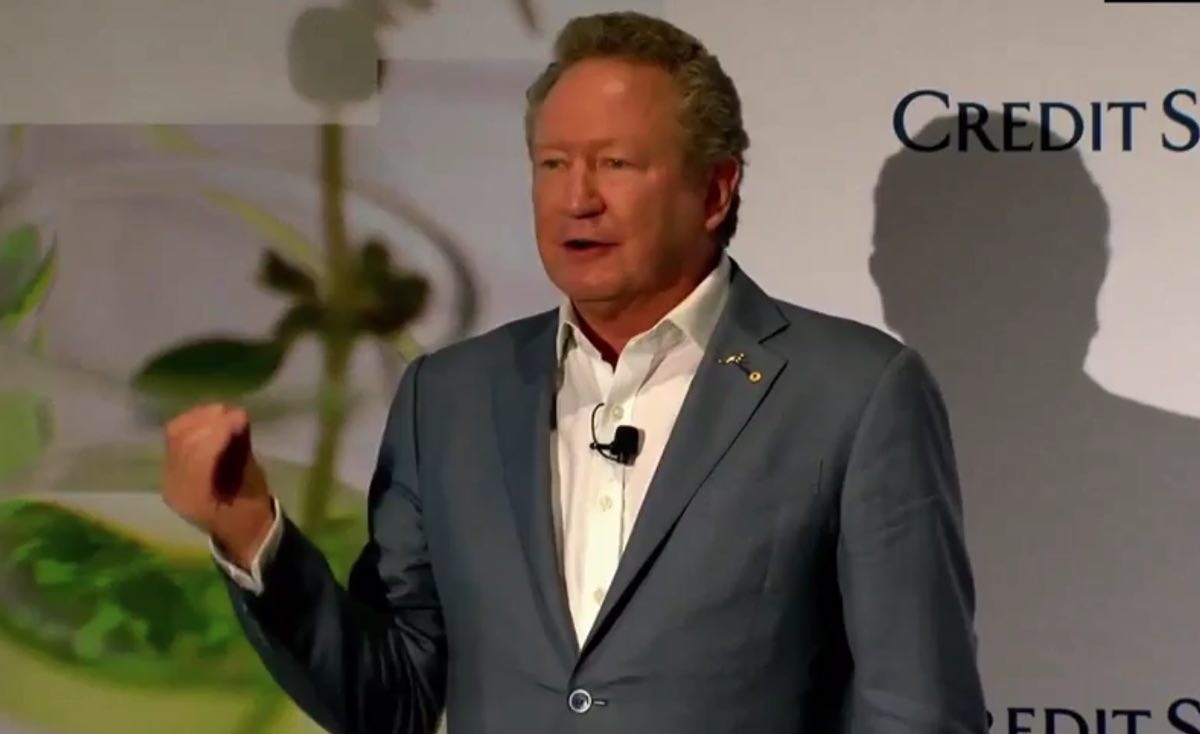Iron ore billionaire Andrew “Twiggy” Forrest has delivered some extraordinary predictions for the renewable hydrogen industry, saying it could grow to $16 trillion by 2050, “way more than any industry that exists today”.
In a speech to the Clean Energy Council’s “Infinite Australia” webinar, Forrest – one of Australia’s richest men – also declared his goal of producing 15 million tonnes of renewable energy hydrogen by 2030 through his Fortescue Future Industries, and ridiculed the push for gas and sequestered hydrogen.
The Australian fossil fuel industry, with the support of the federal government, is spending significant sums trying to produce hydrogen from coal and gas, coupled with the promise of carbon capture and storage, even though new studies say this combination will increase rather than cut emissions.
“The oil and gas sector is preying on public hope, and the political opportunism this allows – by allowing the colours of the rainbow and calling it clean hydrogen, which of course, being made from fossil fuels, it is anything but,” Forrest said.
“Blue, grey, pink, yellow hydrogen is not renewable green hydrogen. And don’t get me started on the smokescreen of sequestration.
“The most recent argument that hydrogen made from fossil fuel whose carbon emissions have attempted to be sequestered – buried in the ground – is “the new green”, is false. Regardless of the success of sequestration – it normally fails, there are huge carbon emissions emitted in its process.
“If it is not renewable green, don’t be fooled by any other colour coded spin. Any other colour than renewable green is dirty hydrogen.”
Forrest says the green hydrogen market could create revenues of $US12 trillion ($A16 trillion) by 2050, an industry on the scale unlike any ever seen, as it meets clean energy needs in transport, energy and industry.
Forrest’s own plans for FFI are to produce 15 million tonnes of renewable green hydrogen a year by 2030, “increasing to 50 million tonnes per annum thereafter – a scale equal to the very largest oil and gas companies today.”
This is certainly ambitious. It is not clear if Forrest is referring to green hydrogen only or green ammonia, but if it is green hydrogen only then it will likely need wind, solar or hydro at a scale in the hundreds of gigawatts.
FFI is yet to reveal exactly where it will source these zero emissions technologies, although it has reportedly been securing major land access deals in Western Australia, particularly in the Pilbara.
The biggest project unveiled to date in Australia, and the world, is a 50GW wind and solar facility north of Esperance in Western Australia, which will focus on green ammonia. But this project – if it goes ahead – will not likely get investment approval for at least another five years.
“We have secured agreements with countries all over the world to develop significant renewable energy sources to produce renewable green hydrogen,” Forrest said.
“We will also aggressively pursue projects across Australia and develop renewable energy at an unprecedented scale.”
Forrest says the latest IPCC report makes clear that the world is in a race to “save the environment as we know it.” He said it was a race to Net Zero, and said the UN-sponsored COP26 climate meeting in Glasgow in November will be so important for the world.
“This is our last chance to slow, then stop, the planet cooking,” Forrest said.
“I am not in the doomsday business; I’m an optimist, and I am in the solutions business. My answer is renewable Green Hydrogen.
“Our greatest natural resource isn’t iron ore, it isn’t gold, it isn’t gas, it’s certainly not oil or coal, it is green hydrogen.
“Hydrogen is by far the most common element of the universe. We aren’t going to run out of it anytime soon. It makes up 75% of the mass of the universe.
“To make it, all you need to do is run electricity through water. When that electricity is from 100 per cent renewable electricity, the result is green hydrogen, the only clean source of energy in the world, and one that could replace up to 75 per cent of our emissions, if we had the technology and the scale today.”










